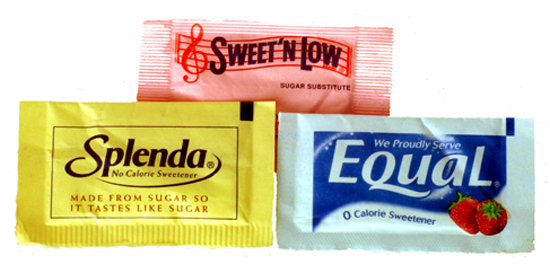Ontario’s Grand River loaded with artificial sweeteners, study finds
by Ivan Semeniuk, Science Reporteer
Ontario’s Grand River is so chock full of artificial sweeteners that scientists say the chemicals can be used to track the movement of treated waste in the region’s municipal water supplies.
Artificial sweeteners are used as sugar substitutes in diet drinks and foods.
They impart no calories because they are not readily broken down in the human digestive system, so they tend to exit the body intact.
But that persistence also means the sweeteners linger long after they are flushed away.
They survive processing in waste-water treatment plants, find their way into the environment and reappear in drinking water.
As part of a long-term study, scientists with Environment Canada and the University of Waterloo repeatedly sampled 23 sites along the Grand River system as well as household taps.
Four artificial sweeteners – acesulfame, saccharin, cyclamate and sucralose – were detected, in some cases at higher concentrations than reported anywhere else in the world.
At one site, the researcher calculated that the equivalent of 90,000 to 190,000 cans of diet soda were being consumed each day to account for the quantity of acesulfame they measured.
“If you think about all those cans of pop floating down the river, it’s quite an image,” said Sherry Schiff, a biogeochemist at the University of Waterloo and a co-author of the study, published Wednesday in the open access journal PLOS ONE.
Nearly one million people live in the region, which includes the communities of Kitchener-Waterloo, Guelph, Cambridge and Brantford.
About half of those people rely on the Grand for their drinking water.
While the sweeteners are approved for human consumption and are present in far greater concentrations in diet products, their appearance in drinking water may come as an unnerving surprise to some. The main aim of the study was to see how well the chemicals can be used to keep tabs on where wastewater ends up.
Because of its stability, acesulfame in particular “seems to be perhaps the most ideal tracer of wastewater found so far,” said John Spoelstra, a research scientist at the National Water Research Institute in Burlington, Ont., and lead author on the study.
Armed with such a tracer, he added, scientists can better spot where human waste is coming into a watershed – not only from municipal water treatment plants, but from septic systems that may be leaking into groundwater. The changing concentrations of the sweeteners can also be compared with that of pharmaceuticals or other chemicals that may pose a health risk but whose pathway and evolution in the water system is not well understood.
“We need a tracer to be able to be able to distinguish dilution effects from actual removal and degradation effects,” Dr. Spoelstra said.
He added that while other researchers have looked at artificial sweeteners in drinking water systems, this is the first time a study has documented their movement on the scale of an entire watershed.
“We’re looking at how sweeteners are accumulating in that water as you move downstream and more and more wastewater is coming into the system,” Dr. Spoelstra said.
The authors stressed that more research is needed to understand the long-term impact of the sweeteners on the environment. Acesulfame, for example, can break down under exposure to ultraviolet light from the sun, producing compounds that are more toxic than the sweetener itself.
The Grand River is the largest Ontario River that drains into Lake Erie.




